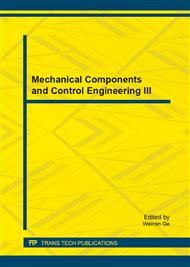p.1072
p.1076
p.1081
p.1086
p.1090
p.1094
p.1098
p.1102
p.1106
Multi-Attribution Classification Based on Lower Integral with Genetic Algorithm
Abstract:
Fuzzy integral has been widely used in multi-attribution classification when the interactions exist between the attributions. Because the fuzzy measure defined on the attributions represents the weights of all the attributions and the interactions between them. The lower integral is a type of fuzzy integral with respect to fuzzy measures, which represents the minimum potential of efficiency for a group of attributions with interaction. The value of lower integrals can be evaluated through solving a linear programming problem. Considering the lower integral as a classifier, this paper investigates its implementation and performance. The difficult step in the implementation is how to learn the non-additive set function used in lower integrals. And Genetic algorithm is used to solve the problem. Finally, numerical simulations on some benchmark data sets are given.
Info:
Periodical:
Pages:
1090-1093
Citation:
Online since:
October 2014
Authors:
Price:
Сopyright:
© 2014 Trans Tech Publications Ltd. All Rights Reserved
Share:
Citation:


